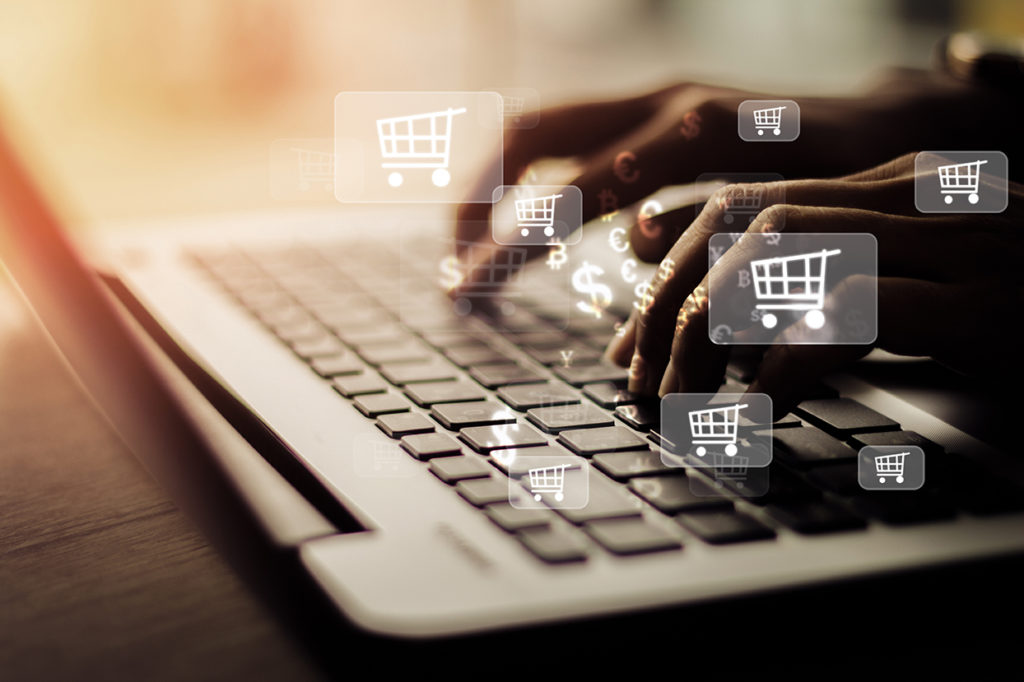Learning Hub | E-Commerce
Ecommerce Psychology: There’s An Impulse Buyer in All of Us
December 21, 2020 | Jon Teodoro

Ecommerce is an ongoing dialogue with your customers.
The psychology of online shopping is not fixed in place. It’s on the move, and everything has been thrown into overdrive by the pandemic.
So, the right ecommerce strategy is essentially one that can pivot on a dime—or rather, one that has enough tools to be able to pull the right levers at the right time. The more responsive your ecommerce strategy, the more you can keep up with consumers.
Online shoppers are more active than ever, even when they’re just “browsing.”
In a customer’s lifecycle, they will represent different types of shoppers at different moments:
People actively searching for something specific
The best response to a customer who knows what they want is a rich, detailed, accurate portrayal of your inventory. Ecommerce can no longer afford to rely on brick-and-mortar to fill in the gaps here.
People browsing with the intent to buy but without anything clear in mind
Black Friday, which essentially became Black Fall this year, always proves the strength of a good discount. But the gift-giving hunt still has plenty of whitespace. It’s an opportunity for brands to cut through the noise and help guide customers in the right direction.
People who’ve been pushed to your site
When customers knowingly enter your digital brand environment—whether directed there by email, SMS, or social media—they deserve to land where they expect to. An item- or promotion-specific page is far more effective than a website landing page.
Window shoppers
By today’s standards, browsing online is not really “casual” given the depth customers can quickly reach and the fact that brands can always catch them later when prior browsing (a powerful bit of data) has turned into a moment to buy.
How do you tie all these different shopping moments together?
Use AI to anticipate what customers want
The smarter your inventory and supply chain, the more you can get ahead of trends. AI can not only help with this but also automate the personalization aspect so that customers experience your inventory in a way that’s specifically relevant to them.
Product customization
By allowing customers to participate in the process and place their stamp on the final product, brands enhance the value of that product and the relationship with their consumers. Nike, for one, has been doing this since the early 2000s.
Gated product launches
Unveiling products in such a way that only select customers get early access is a powerful way to generate excitement and demand. A loyalty program is the logical place to start. It’s like turning your product into concert tickets.
Gamification
Brands everywhere are exploring the different ways you can connect ecommerce with gamified experiences and rewards. Ecommerce platform Pinduoduo has an enormous customer base that is incentivized through highly interactive experiences, including one game that allows you to water a tree—but only after purchasing items through the app.
Micro Persuasion: Nudges and Exit/Entry Pop-Ups
Pop-ups are nothing new. What’s new is relevant, timely, personalized messages. Geolocation, for example, can help contextualize why a customer in that region might be interested in an item and serve them a timely nudge. “Wear this with” is a powerful new trend that allows for cross-selling, but you can also imagine using “Wear this when” to great effect.
Keeping customers engaged with your site is both a challenge and a creative opportunity. Offers and promotions can be served as pop-ups tailored for the user at hand, incentivizing them either when they first arrive at your site or when it looks like they’re about to leave, encouraging them to stick around.
Reflect their lifestyle to refine their experience.
Ecommerce has the power to be a throughline between people’s online, mobile, and physical worlds.
There are still plenty of areas to learn from brick-and-mortar retail and even the mall environment (which Ikea is resurrecting), including:
- Customer service
- Intuitive (and seasonal) shelving
- The exploratory nature of in-person shopping
- The “gathering place” aspect of malls and the blending of shopping with recreation
Thankfully, the very nature of ecommerce allows for piloting, testing, and innovating with far greater speed than in-store shopping. By employing the right tools, brands can not only recognize the context around a shopper’s in-the-moment behavior but help transition that behavior to a moment of conversion or greater brand understanding.
